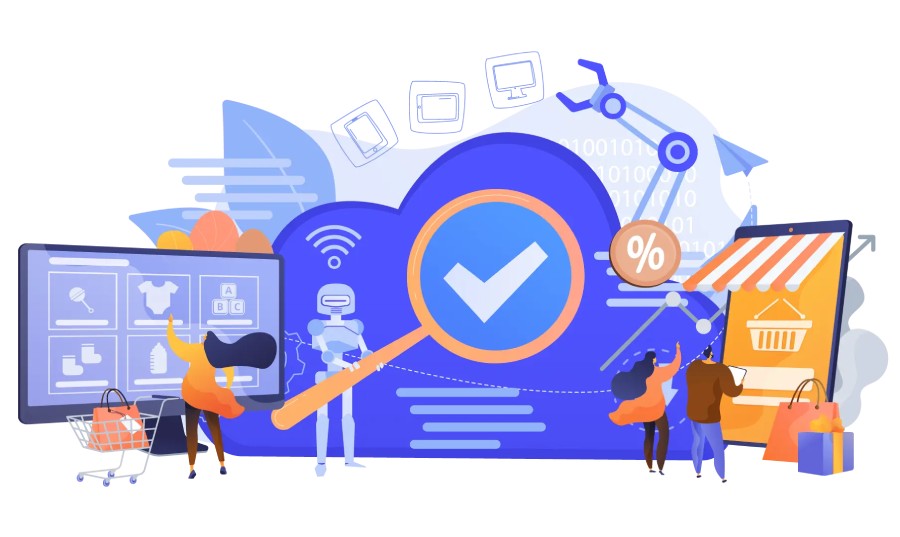
Top Tools To Support Your Company’s Digital Transformation
There is a lot of talk of what is colloquially referred to as “digital transformation” right now–the process by which firms update their systems, processes and skill sets to be more competitive and better equipped for a world in which AI and automation are must-haves.
Digital transformation affects companies of all sizes and across industries. Some industries are better poised to take advantage of the wide range of new software and digital tools that facilitate and underpin this process, while others are struggling to catch up. Wherever you find your company, below are the top tools you need to help support digital transformation.
Communication Tools
Communication has always been essential to organizational success, but no more so than ever with employees working both in and outside the office. Effective communication is necessary for continued productivity, especially real-time communication that allows employees located in different parts of a city, country or even around the world to interact seamlessly using multimedia and text. They also include virtual event tools that help workforces and associations stay in contact when in-person meetings are not feasible.
Furthermore, communication tools have become an integral part of being able to meet and share ideas and information in the pandemic and post-pandemic era. Without programs like Slack, Zoom, Discord, Microsoft Teams and others, it would simply not be possible for modern offices to function. As more companies extend their work from home arrangements and workforces continue to become more international, these communication tools will remain an integral part of digital transformation for all companies across industries.
Collaborative Tools
Cloud-based collaborative tools have been in vogue for several years now, but they were undoubtedly given a major popularity boost during the 2020 pandemic as companies were forced to adopt them in order to accommodate remote work. Employees need to be able to access data and company networks from wherever, whenever, so cloud collaborative tools are crucial. Growth right now, in the era of indefinite remote work and hybrid work arrangements, requires companies to adapt to this new technology.
There are myriad popular options to choose from, From Google’s G Suite to Microsoft Office 365. While each has its own unique features, a good collaborative tool allows companies to manage their data, maintain organizational structure, share and access documents, and integrates well with other digital tools required for collaboration and teamwork.
Intranet Platforms
One of the most valuable but underappreciated components of successful digital transformation is next-generation intranet platforms. The bygone era of intranets characterized by long lists and static abilities that were fixed and non-collaborative has been replaced by one in which company intranets are key agents in digital transformation. Tools like LumApps, for instance, a social intranet platform, help make employee knowledge sharing and collaboration simple by integrating whatever collaborative tools or suite you are using with other business apps.
These new generation intranet tools allow for both internal and external communication by building strong collaborative communities inside the organization and ones linked by social media outside of it. When these new intranets are employed effectively, IT, HR, and communications business functions are able to collect a wide range of corporate data and use it to improve everything from engagement to productivity.
Cloud Storage
With the shift to remote work and the cost savings of alternative storage options, many companies are moving to the cloud for their data storage needs. Cloud storage is a vital component of an organization’s information management, rapid deployment and scalability capabilities for many reasons, making it an integral part of digital transformation. Cloud storage means there is no hardware, so businesses can increase or decrease their capacity whenever they like.
Furthermore, all company data becomes accessible globally by an increasingly global workforce, which provides the perfect workaround for dramatically smaller offices and the need for in-house IT infrastructure. Agility and digital transformation go hand in hand, and cloud storage allows for rapid scaling up and down, and therefore much better cost management. Cloud data centers are also being used because they are inherently more green than on-site data storage.
CMS
CMS, or Content Management Systems, have become non-negotiable components of digital transformation. With a CMS, a business can better create and manage its digital content and digital marketing across platforms while also providing all levels of the organization with valuable marketing information with which to make decisions. Given that the majority of consumers possess a smartphone, most internet traffic is mobile, and most purchasing, especially in the wake of the pandemic, takes place online, companies need the sophisticated automation and data management capabilities offered by (ideally) industry-specific CMS.
CMS are usually sold as SaaS and are subscription-based, with greater functionality coming at higher price points. These systems are the epicentre of modern marketing efforts in the digital era and, exploited to their full potential, integrate with applications and other business functions throughout the organization.
CRM
CRMs, or Customer Relationship Management, systems are also vital to successful digital transformation. This is because customer experience is of the utmost importance in this day and age. The majority of companies now compete on customer experience, and customers are more likely to remain loyal to a particular brand, recommend it to friends and families, and are often even willing to pay a premium for products and services when customer service is exceptional.
Customers are also much more demanding in a market where so many companies are bending over backwards to offer them a superior experience. CRMs are designed to help organizations understand customer needs and better address them through automation and good data management, shortening the sales cycle and ensuring customers remain customers and don’t take their business elsewhere.
Project Management Tools
Having the right project management tools makes operations more efficient, can get products and services to market faster (important in an economy in which speed and agility are of the essence) and provide organizations with a competitive edge. Project management tools are an invaluable part of any company’s digital transformation because they help make creating and scheduling tasks easier, tracking progress more accurate, and interdepartmental collaboration more seamless.
There are numerous project management tools on the market, some free, some paid, including Trello, Monday, Asana and others. When it comes to hybrid and remote work environments, having a cloud-based project management platform is a crucial element of digital work and a key enabler of digital transformation.
Recruitment Tools
The cost of hiring a new employee is substantial, with companies often spending thousands of dollars on just the hiring process alone. Hiring the wrong person for the job can end up being catastrophic for a business, which is why being able to find, assess, call in for an interview, and onboard the right people is of the utmost importance. Recruitment can take place in a variety of ways, and one which is becoming almost non-negotiable and widely recognized as digital transformation best practice, is using specialized recruitment software. Recruitment management lets companies identify the right resumes for the job, shortlist candidates, and share options with team members and hiring managers.
They let hiring managers comment on interviews and resumes, share interview feedback with candidates, and plan the next steps in the hiring process. Programs like TalentSoft and SmartRecruiters are two of the most popular and widely-used options on the market and save companies a tremendous amount of time scanning resumes (sometimes hundreds). Time-saving and accuracy are two of the motivating factors that inform digital transformation.
Accounting Tools
Digital transformation is changing every business functionality from the top down, including things like accounting. Accountants do much more now than just crunch numbers, and they rely much more heavily on computerized accounting systems and tools to do their jobs. These tools provide faster processing and better, more dynamic reporting, and their effects reverberate far outside the finance and accounting department.
There are plenty of commonly-used accounting tools that are driving digital transformation, including Sage, NetSuite, and SAP ERP. As with any new digital tool, it is always important to consider how well a particular tool integrates with third-party applications ionic application development and software. It is also important to consider cloud availability and how intuitive the dashboard is for accountants to use–especially those who are behind the curve digitally.
Recognition Software
Recognition software has become immensely popular over the last year as companies have sought ways to keep remote workers engaged and productive outside the office. However, the worry among many managers, HR and organizational behavior experts is that remote workers are easy to forget about for companies because they are out of sight, and therefore out of mind. One consequence of this that organizations are anxious to avoid is a drop in morale and performance.
It has been widely acknowledged in the OB and HR literature for some time that there is a strong link between employee recognition and engagement. Companies talk about creating a “culture of recognition” that gives employees ways to share recognition and social capital with one another and from managers to employees as well. Giving employees in remote and hybrid workplaces opportunities to reward one another with gifts, accolades and praise for a job well done is an important part of transforming work when people are no longer in the office full-time.
Payroll Management
Payroll management tools have become an important part of digital transformation because they seek to eliminate another tedious, manual task defined by a large amount of repetitive work. With the right tools, payroll can be accomplished almost instantaneously, eliminating a time-consuming HR process more efficiently and accurately done by a program.
Software like Payfit, Workday, and Figgo provide centralized ways of keeping track of employee sick days, billable hours on projects, overtime, career development and a lot more. Easy-to-use dashboards allow HR professionals and employees alike to access these systems and record and track expenses, request and grant time off and various other everyday payroll-related interactions.
Benefits Management
The pandemic changed the way many companies look at benefits, including both the kind and scope of benefits. Jobseekers increasingly make decisions about where to work based on what kind of benefits packages an employee offers and how much coverage is extended to family members and even pets. Benefits management used to be an HR specialization unto itself, however, it is increasingly being handled by sophisticated benefits software that allows employees and HR to each monitor how and where benefits allocations go.
Benefits management and benefits administration systems are also fundamental parts of digital transformation in an era where fewer people work side by side in an office because it makes it easier for HR and employees to share and access information. This software lets employees know about updates to their plans, what actions are required of them and how to enrol in benefits that are of interest to them.
Compliance Management
Compliance management software is a necessary tool for many companies because it makes sure workers have the necessary knowledge to comply with and work within the bounds of a company’s risk management framework. It is an integrated system of controls, tools, documents, functions and processes that make complying with legal requirements more straightforward and less vulnerable to human error.
Regulatory and legislative landscapes can change rapidly, and bringing an entire, often geographically dispersed organization up to speed, requires a lot of logistical effort in the absence of compliance management software.
Conclusion
Digital transformation is not an option; it is a matter of survival in virtually every industry. Companies that fail to embrace the new world of digitization and automation will likely find they are outcompeted by those that make better use of their data, streamline processes, and constantly strive to cut out tediousness and repetitiveness from their core operations.
Of course, digital transformation is not free, and companies need to seriously consider their budgets before making any or all of the above purchases–although it is important to bear in mind that there are always free options. Consider the benefits of each category of digital tool mentioned above and make sure your company survives the fourth industrial revolution.

The Etsy Business Model: How Does Etsy Make Money?

How eCommerce Solutions Are Revolutionizing the Way We Do Business?

How to Protect Your Personal Data Online

6 Tips for Being a Successful Fleet Manager

How Should you Analyse Competitors Social Media Strategies




